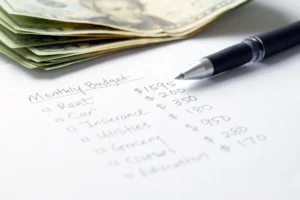Alright ladies let’s be real, our debt is like that ex who keeps texting “u up?” at 2 a.m. — persistent, annoying, and somehow still draining your energy. For women in 2025, debt isn’t just a financial nuisance; it’s a full-blown lifestyle disruptor. But here’s the good news: you can ghost it for good. Let’s break down the top debts women are facing in 2025 and how to kick them to the curb — with style, strategy, and a little sass.
🎯 The Usual Suspects: What’s Dragging Down Your Wallet?
| Debt Type | Average Amount (2025) | Why It’s a Problem |
|---|---|---|
| Credit Card | $6,580 per person | High interest rates (avg. 20%+), sneaky fees, emotional spending triggers |
| Student Loans | $1.63 trillion total | Long repayment terms, paused forgiveness programs, career shifts |
| Auto Loans | $24,373 per person | Necessary evil for mobility, but monthly payments eat into savings |
| Personal Loans | $11,607 per person | Often used for emergencies, but can snowball fast |
💥 Credit Card Chaos: How to Tame the Plastic Beast
Credit cards are like glitter—exciting, sparkly, and surprisingly hard to clean up once they scatter. But with the right strategy, you can harness their perks without getting buried in interest. Think of them as powerful tools that need a little structure and a lot of intention. ✨💳
☕ Know Your Numbers Like You Know Your Starbucks Order

Before you choose a payoff strategy or even set a goal, you need to know exactly what you’re working with. Here’s what to gather:
📊 Check Your Core Stats:
Balance: How much you owe on each credit card or loan.
Interest Rate (APR): Determines how expensive your debt really is—the higher the rate, the more your debt snowballs.
Minimum Payment: The bare minimum required each month to stay in good standing. Knowing this helps avoid late fees and credit score hits.
💡 Pro Tip: List these out in a spreadsheet or budgeting app so you can visually map your plan.
🔍 Monitor Your Credit Score Regularly
Use free tools like:
- Credit Karma (tracks your score, balances, and suggests improvement strategies)
NerdWallet (adds budgeting tools and personalized financial tips)
Experian (offers free FICO scores with additional insights)
Knowing your score helps you:
Spot suspicious activity
Track progress as you pay down debt
Qualify for lower-interest options in the future (hello, balance transfers!)
💡 Reminder: Your credit score isn’t a moral compass—it’s a number. And numbers can be moved.
💳 Choose Your Payoff Power Play — Avalanche or Snowball Your Way to Debt Freedom

🏔️ Avalanche Method: Best for Big Interest Bullies
What It Is:
Pay off the debt with the highest interest rate first while making minimum payments on the rest.
Why It Works:
Saves money long-term: You’ll pay less in interest overall.
Great for high-interest debts: Like credit cards, payday loans, or store cards.
Use If You…
Have one or more debts with scary APRs (think 19%+).
Don’t need instant gratification to stay motivated.
Want to be efficient like a spreadsheet ninja.
Example:
You’ve got:
Credit Card A: $4,000 at 22% APR
Credit Card B: $1,800 at 14% APR
Store Card C: $700 at 26% APR
You’d pay extra toward Store Card C first—even though it’s the smallest—because that interest rate is outrageous.
❄️ Snowball Method: Best for Momentum Mavens
What It Is:
Pay off the debt with the smallest balance first, then move to the next smallest, building confidence as you go.
Why It Works:
Boosts motivation: You get quick wins that keep you going.
Perfect for emotional clarity: Clean slate vibes!
Use If You…
Feel overwhelmed and want fast progress.
Have balances that vary widely in size.
Value psychological wins just as much as financial ones.
Example:
You’ve got:
Credit Card X: $600 at 18% APR
Credit Card Y: $2,200 at 22% APR
Personal Loan: $5,000 at 10% APR
You’d pay extra toward Credit Card X first, knock it out fast, then roll that payment amount into Credit Card Y. It’s like building a financial snowball that crushes debt.
💡 So Which One Should You Choose?
| Scenario | Pick This Strategy |
|---|---|
| High-interest rates are killing you | Avalanche |
| You need motivation and momentum | Snowball |
| Mixed debt and unsure where to start | Start with Snowball, switch to Avalanche once confident |
You can also hybridize—start with the Snowball to get some wins, then flip to Avalanche once you feel like Beyoncé on a budget mission. 🔥💰
✂️ Cut the Fat — Slim Down Spending Without Starving Your Joy

This step is all about identifying the sneaky little expenses that quietly nibble away at your budget. You’re not cutting out the fun—you’re just making sure every dollar is pulling its weight.
🔄 Cancel or Pause Unused Subscriptions
Subscriptions are like houseplants: great when nurtured, but sad when forgotten.
Audit your lineup:
Streaming: Do you really need Netflix, Hulu, Disney+, and Max? Rotate monthly based on what you’re watching.
Fitness: If your Peloton app hasn’t seen you since spring, pause it and try free YouTube workouts.
Beauty Boxes: If your sample drawer is overflowing, pause Ipsy or BoxyCharm until you use what you have.
Tools to help:
Rocket Money: Syncs with your bank and auto-detects subscriptions.
Trim: Text-based and great for negotiating bills.
Bobby: Manual entry, privacy-friendly, and color-coded for clarity.
💡 Tip: Set a quarterly reminder to audit your subscriptions. If you forgot you had it, you probably don’t need it.
💳 Switch to Cash or Debit for Daily Purchases
Credit cards can feel like Monopoly money—until the bill hits. Switching to cash or debit helps you stay grounded and intentional.
Try this:
Use the envelope method: Allocate cash for categories like groceries, dining out, and “fun money.”
Set a weekly debit card limit: Once it’s gone, it’s gone.
Use a prepaid card for discretionary spending—great for impulse control.
💡 Mindset shift: You’re not restricting yourself—you’re building awareness. Every swipe becomes a choice, not a habit.
🛍️ Use Cashback Apps to Save While Spending
If you’re going to spend, make sure you’re getting something back.
Top picks:
Rakuten: Earn up to 10% cash back at over 3,500 stores like Sephora, Target, and Expedia. Use the browser extension or app to activate deals.
Honey: Automatically applies coupon codes at checkout and earns PayPal Rewards (formerly Honey Gold) for eligible purchases3.
Ibotta: Great for grocery and retail purchases—scan receipts or link loyalty cards.
Fetch Rewards: Snap receipts from almost anywhere and redeem points for gift cards.
💡 Hack: Stack cashback with store sales and coupon codes for a triple win. And yes, Rakuten lets you earn cash back on gift cards too
🛠️ Consider a Balance Transfer — The Strategic Swipe That Could Save You Hundreds

If your credit card debt is stacking up faster than your skincare empties, a balance transfer might be your financial plot twist. This move lets you shift your existing credit card balance to a new card with a 0% introductory APR—giving you a window to pay down debt without interest breathing down your neck.
💳 What Is a Balance Transfer?
A balance transfer is when you move debt from one credit card to another—ideally one offering 0% interest for 12–24 months. During this intro period, every dollar you pay goes toward your principal, not interest. It’s like hitting pause on the financial drama.
🧠 When It Makes Sense
Balance transfers are ideal if:
- You have high-interest credit card debt (think 18%+ APR)
- You can realistically pay off the balance within the promo period
- Your credit score is solid (typically 670+ for the best offers)
💡 Example: You owe $3,000 on a card with 22% APR. Transferring to a card with 0% APR for 18 months could save you over $800 in interest—money that could go toward savings, travel, or your emergency fund.
🕵️♀️ Read the Fine Print Like a Detective
Before you transfer, check:
- Transfer fees: Usually 3–5% of the amount transferred. A $3,000 transfer could cost $90–$150.
- Time limits: You often need to transfer within 60 days of opening the new card to qualify.
- Post-intro APR: If you don’t pay off the balance in time, interest kicks in—often 18–29%.
💡 Tip: Avoid using the new card for purchases. Most 0% APR offers apply only to transferred balances, and new charges may accrue interest immediately.
🏆 Top Balance Transfer Cards in July 2025
| Card Name | Intro APR Period | Transfer Fee | Notes |
|---|---|---|---|
| U.S. Bank Shield™ Visa® | 0% for 24 months | 5% | Longest intro period available |
| Citi Simplicity® Card | 0% for 21 months | 3–5% | No late fees, generous window |
| Wells Fargo Reflect® Card | 0% for 21 months | 5% | Includes cell phone protection |
| Citi Double Cash® Card | 0% for 18 months | 3–5% | Earns 2% cash back while you pay |
| Chase Slate Edge℠ | 0% for 18 months | 3–5% | Offers credit limit increase review |
📆 How to Use It Strategically
- Calculate your payoff timeline: Divide your balance by the number of interest-free months.
- Set up autopay: Never miss a payment—late payments can void your 0% APR.
- Avoid new debt: Treat the new card like a debt tool, not a spending spree.
Track your progress: Use a spreadsheet or budgeting app to stay on target.
🎓 Student Loans: The Never-Ending Group Project

Student loans are the financial equivalent of group projects — you did all the work, and now you’re stuck with the bill. But you’re not alone.
📚 Step 1: Know Your Loan Type
- Federal vs. private loans have different rules.
- Use the Federal Student Aid website to check your details.
🧮 Step 2: Pick a Repayment Plan That Fits
- Income-Driven Repayment (IDR): Payments based on your income.
- Standard Repayment: Fixed payments over 10 years.
- Extended Repayment: Lower payments, longer term.
🧘♀️ Step 3: Don’t Wait for Forgiveness
- While programs exist, they’re slow and unpredictable.
- Make extra payments when possible — even $50/month helps.
🧠 Step 4: Refinance (But Carefully)
- Only refinance if you have stable income and good credit.
- You’ll lose federal protections, so weigh the pros and cons.
💪 Realistic Tips for Real Women
Because not everyone has a trust fund or a sugar daddy:
- Side Hustle Smart: Freelance, sell digital products, or tutor online.
- Automate Payments: Set it and forget it — consistency is key.
- Celebrate Small Wins: Paid off a card? Treat yourself (responsibly).
- Talk About It: Join online communities like HerMoney or Ellevest for support.
🏁 Final Thoughts: You’re Not Behind, You’re Just Getting Started
Debt doesn’t define you. It’s just a chapter — not the whole story. Whether you’re drowning in student loans or dodging credit card statements like exes at brunch, you’ve got the tools to turn things around. And remember: Taylor Swift didn’t become a billionaire overnight. She probably had a budget spreadsheet too.









